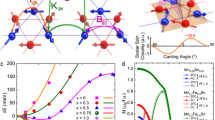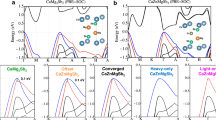Abstract
THE third positive group of CO bands has been studied often before, but no satisfactory analysis of the bands seems to have resulted from it. Therefore we have photographed the bands in the second and third order of a 21-ft. concave grating with 20,000 lines per inch. So far, we have studied the bands 0.0 to 0.4 with heads at 2833, 2977, 3134, 3305, and 3493 A. The bands are due to a 3σ3II transition. The triplet separation of the 3σ state is unnoticeable for J<20. Under these conditions we must expect 15 branches if the resultant spin is not yet completely coupled to the rotational axis (transition from case a to case b). We found 13 of these branches arid traces of the remaining two, which are too faint to be observed among the strong main branches. The five heads which are characteristic for the bands under low dis-persion are the heads of the 03, 02, P3, P2, and P1 branches (in the simplified notation of case b). The initial level shows very strong perturbations from about K = 16 on, and slight irregularities also for very small K values. This fact makes an analysis of the higher lines of the bands much more difficult, and we have not yet completed this part entirely. The moment of inertia for the final state is 16.5 × 10-40, and for the initial state approximately 14.3 × 10-40. The character of the λ-doubling and the number of missing lines near the origin identifies the final ele-ctronic state as a regular 3II state.
This is a preview of subscription content, access via your institution
Access options
Subscribe to this journal
Receive 51 print issues and online access
$199.00 per year
only $3.90 per issue
Buy this article
- Purchase on SpringerLink
- Instant access to full article PDF
Prices may be subject to local taxes which are calculated during checkout
Similar content being viewed by others
References
Proc. Roy. Soc., A, 125, 277; 1929.
Author information
Authors and Affiliations
Rights and permissions
About this article
Cite this article
DIEKE, G., MAUCHLY, J. Structure of the Third Positive Group of CO Bands. Nature 129, 546 (1932). https://doi.org/10.1038/129546b0
Issue date:
DOI: https://doi.org/10.1038/129546b0



